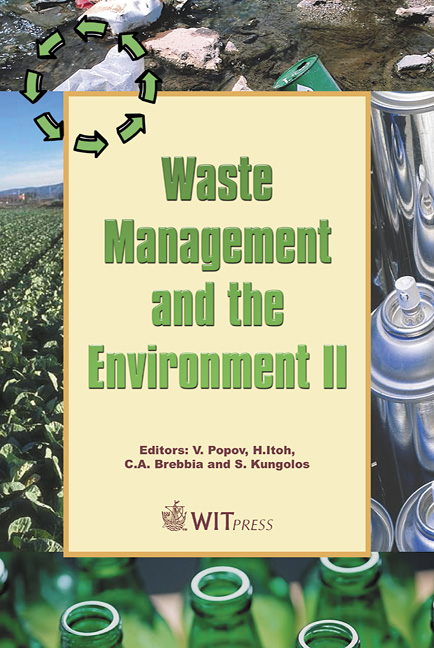LCA And An Integrated Environmental Monitoring System As Joint Tools For Incinerator Environmental Impact Assessment
Price
Free (open access)
Transaction
Volume
78
Pages
9
Published
2004
Size
256 kb
Paper DOI
10.2495/WM040301
Copyright
WIT Press
Author(s)
L. Morselli, J. Luzi, M. Bartoli, I. Vassura & F. Passarini
Abstract
Incinerator emissions still represent an important issue of public environmental concern. The application of Life Cycle Assessment to a municipal solid waste (MSW) incinerator is an important instrument for the identification of the main environmental impacts on the entire ecosystem. Beside this, an Integrated Environmental Monitoring System can be applied in order to understand the most direct contamination in the surrounding territory. This approach can integrate ordinary chemical monitoring instruments, together with biomonitoring methodologies, and can give an interesting understanding of the interaction of the various pollutants with the environmental matrices. The application of both tools provided useful results: by using LCA it was possible to understand that the incineration process, besides reducing the amount of waste which must be landfilled, decreases the environmental impact related to some categories, due to energy recovery which avoids the consumption of non-renewable fuels; by monitoring, many interesting correlations were found between heavy metals (chosen as environmental indicators) both in gas emissions and in natural matrices in the surroundings (in particular, depositions). The joint employment of these two instruments can lead researchers and decision makers to understand the most critical steps of the whole incineration process, indicating the greatest global, regional environmental and local impacts. Keywords: incineration plants, heavy metals, Life Cycle Assessment, environmental monitoring, environmental impact.
Keywords
incineration plants, heavy metals, Life Cycle Assessment, environmental monitoring, environmental impact.





